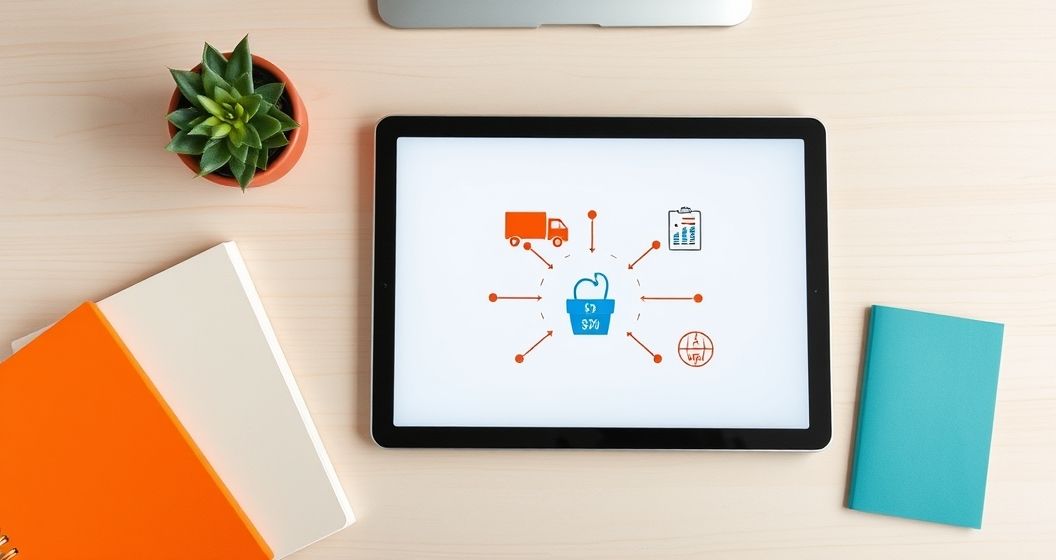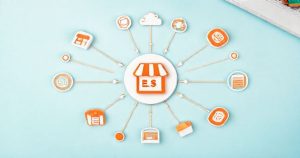Managing a growing Etsy shop involves more than just creating beautiful products. As orders increase, tasks like inventory management, shipping, and marketing can become overwhelming and time-consuming. This is where Etsy integrations become essential tools for success. They are designed to automate repetitive tasks, synchronize data across platforms, and ultimately free up your time to focus on creativity and business growth. This guide explores the most impactful integrations that can help you operate more efficiently and scale your e-commerce venture effectively.
What Are Etsy Integrations?
Etsy integrations are third-party software applications that connect your Etsy store to other services or platforms. Think of them as digital bridges that allow different systems to communicate and share information automatically. For example, an integration can link your shop to a shipping carrier, an accounting program, or a print-on-demand service. By creating this seamless connection, you eliminate the need for manual data entry, reduce the risk of human error, and create a more cohesive and automated operational workflow for your online business.
Key Benefits of Integrating Your Etsy Shop
Implementing the right tools offers a significant competitive advantage by enhancing efficiency and customer satisfaction. These automated solutions handle the backend processes, allowing you to focus on product development and marketing. The primary benefits include saving valuable time, minimizing costly errors, and providing a scalable foundation for growth. Exploring these advantages reveals how a well-integrated shop can transform from a manual operation into a streamlined, professional e-commerce business poised for expansion.
1. Automated Order Fulfillment
For sellers using print-on-demand (POD) or dropshipping models, fulfillment automation is a game-changer. Integrations with services like Printful or Printify allow orders from your Etsy shop to be sent directly to your production partner. When a customer makes a purchase, the integration automatically transmits the order details, including the product design, quantity, and shipping address. Your partner then prints, packages, and ships the item directly to the customer, often with your branding, creating a hands-off fulfillment process.
2. Centralized Inventory Management
Selling on multiple channels, such as Etsy and a personal Shopify store, presents a major challenge: keeping inventory levels synchronized. An inventory management integration solves this problem by creating a single source of truth for your stock. When an item sells on one platform, the system automatically updates the stock count on all other connected channels. This powerful automation prevents overselling and disappointing customers, ensuring accurate listings and maintaining a professional reputation across your entire online presence.
3. Simplified Shipping and Logistics
Shipping can quickly become one of the most labor-intensive parts of running an Etsy shop. Shipping management integrations, such as ShipStation or Pirate Ship, streamline this entire process. These tools import your orders automatically, allowing you to purchase and print shipping labels in bulk with just a few clicks. They also offer access to discounted postage rates, compare carrier prices, and automatically send tracking information back to Etsy and the customer, saving both time and money on every order you ship.
4. Streamlined Accounting and Finance
Keeping track of finances is crucial for any business, but it can be a tedious task. Accounting integrations with software like QuickBooks or Xero automate your bookkeeping. These tools sync your sales data, Etsy fees, material costs, and other expenses directly into your accounting software. This ensures your financial records are always accurate and up-to-date, making it significantly easier to track profitability, manage cash flow, and prepare for tax season without the stress of manual data reconciliation.
Popular Types of Etsy Integrations
The world of Etsy integrations is vast, with tools designed to solve nearly every challenge a seller might face. These solutions can be grouped into several key categories based on their function. From connecting your shop to larger e-commerce platforms to automating your social media marketing, understanding these different types of integrations will help you identify which tools will provide the most value for your specific business needs. Each category offers a unique way to enhance and automate different aspects of your operations.
1. E-commerce Platform Connectors
Many sellers use Etsy as a starting point before expanding to their own branded website on platforms like Shopify, WooCommerce, or Wix. E-commerce platform connectors are vital for this multichannel strategy. They enable you to manage products, inventory, and orders from a single dashboard while selling across both your standalone site and the Etsy marketplace. This approach allows you to leverage Etsy’s massive built-in traffic while simultaneously building a long-term, independent brand asset with greater control and customization.
2. Print-on-Demand (POD) Services
Print-on-demand integrations are incredibly popular among artists, designers, and creators. Services like Printify, Printful, and Gooten connect seamlessly with your Etsy shop, allowing you to sell custom-designed products like t-shirts, mugs, posters, and phone cases without holding any physical inventory. When an order is placed on Etsy, it is automatically routed to the POD provider who handles production and shipping. This model offers a low-risk, low-investment way to start and scale a product-based business.
3. Marketing and Social Media Automation
Promoting your products is key to driving sales, and marketing integrations help automate this process. Tools like Outfy or Vela can connect your Etsy shop to your social media profiles on platforms such as Pinterest, Instagram, and Facebook. These applications can automatically create and schedule posts for your new listings, promote existing products, or create engaging video content. By automating your social media presence, you can consistently reach a wider audience and drive more traffic to your shop with minimal manual effort.
Choosing the Right Integration for Your Business
With so many options available, selecting the right Etsy integrations requires a strategic approach. The best tools for your shop will depend on your unique products, business model, and biggest operational pain points. Instead of adopting every tool at once, start by identifying the most time-consuming areas of your business. A thoughtful evaluation of your needs, budget, and long-term goals will guide you toward the solutions that offer the highest return on investment and make the most significant impact on your daily workflow.
1. Assess Your Primary Needs
Before investing in any tool, analyze your current workflow to identify the biggest bottlenecks. Are you spending too much time packing and shipping orders? Is keeping track of inventory across multiple channels causing overselling issues? Or is bookkeeping at the end of the month a major headache? Pinpointing your most significant challenges will help you prioritize which type of integration to seek out first. Solving your most pressing problem will deliver immediate value and a noticeable improvement in your efficiency.
2. Consider Your Budget and Pricing Models
Etsy integrations come with various pricing structures. Some operate on a monthly subscription model, others charge a small fee per transaction, and a few may offer a limited free plan. It is crucial to understand the full cost and how it aligns with your profit margins. For example, a print-on-demand service will directly impact the profitability of each item sold. Carefully review the pricing for any tool you consider and calculate its potential impact on your bottom line to ensure it is a financially sustainable choice for your business.
Conclusion: Elevating Your E-commerce Strategy
Etsy integrations are far more than simple add-ons; they are strategic assets that can fundamentally transform how you run your business. By automating fulfillment, synchronizing inventory, simplifying shipping, and streamlining finances, these tools empower you to move beyond manual, repetitive tasks. This shift allows you to dedicate your valuable time and energy to what truly matters: creating exceptional products, marketing your brand, and providing outstanding customer service. Embracing the right integrations is a key step in building a scalable, professional, and profitable Etsy shop.





